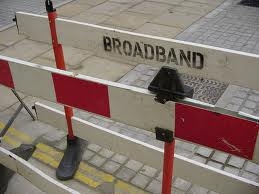Jan 25, 2012

Initial findings released by NTIA showed that while virtually all demographic groups have increased adoption of broadband Internet at home since the prior year, historic disparities among demographic groups remain.
Principal findings of the report:
- Sixty-eight percent of American households used broadband Internet in 2010, up from 64 percent in 2009. Only 3 percent of households relied on dial-up access to the Internet in 2010, down from 5 percent in 2009. Another 9 percent of households had people who accessed the Internet only outside of the home.
- All told, approximately 80 percent of American households had at least one Internet user, whether inside or outside the home and regardless of technology type used to access the Internet.
- Households with lower incomes and less education, as well as blacks, Hispanics, people with disabilities and rural residents, were less likely to have Internet service at home.
- Eighty-one percent of Asian households and 72 percent of white households had broadband at home, compared with 57 percent of Hispanic households and 55 percent of black households.
- Less than half (43 percent) of households with annual incomes below $25,000 had broadband access at home, while 93 percent of households with incomes exceeding $100,000 had broadband.
- Socio-economic differences do not explain the entire broadband adoption gap. For example, after accounting for socio-economic and geographic factors, black and Hispanic households still lag white households in broadband adoption by 11 percentage points, though the gap between Asian and white households disappears.
- The main reasons cited for not having Internet access at home were a lack of interest or need (47 percent), the expense (24 percent), and the lack of an adequate computer (15 percent).
- Not surprisingly, individuals without broadband service at home relied on locations such as public libraries (20 percent) or other people’s houses (12 percent) to go online.
- Between 2001 and 2010, broadband Internet use at home, regardless of technology type, rose from 9 percent to 68 percent of households.
- More than three quarters (77 percent) of American households had a computer at home in 2010, up from 62 percent in 2003.
The full report is available at http://www.esa.doc.gov/Reports/exploring-digital-nation-computer-and-internet-use-home.
Source: US Department of Commerce, “Exploring the Digital Nation - Computer and Internet Use at Home,” November 9, 2011.
Topics: